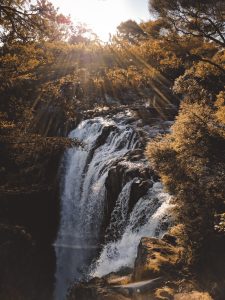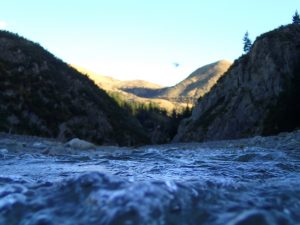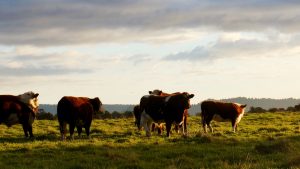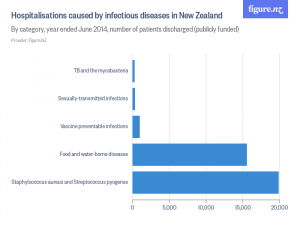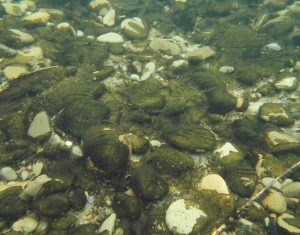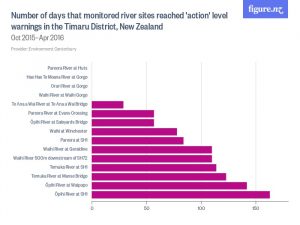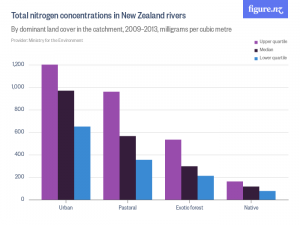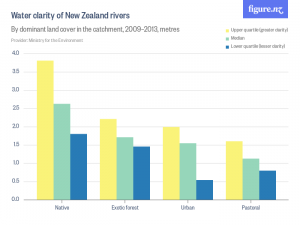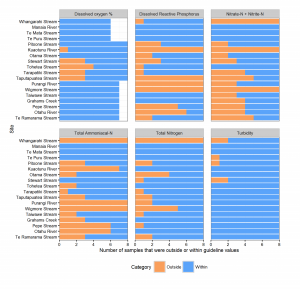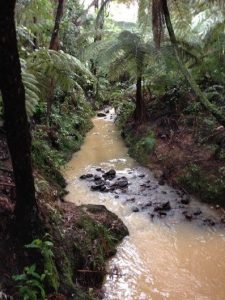Directors' Blog
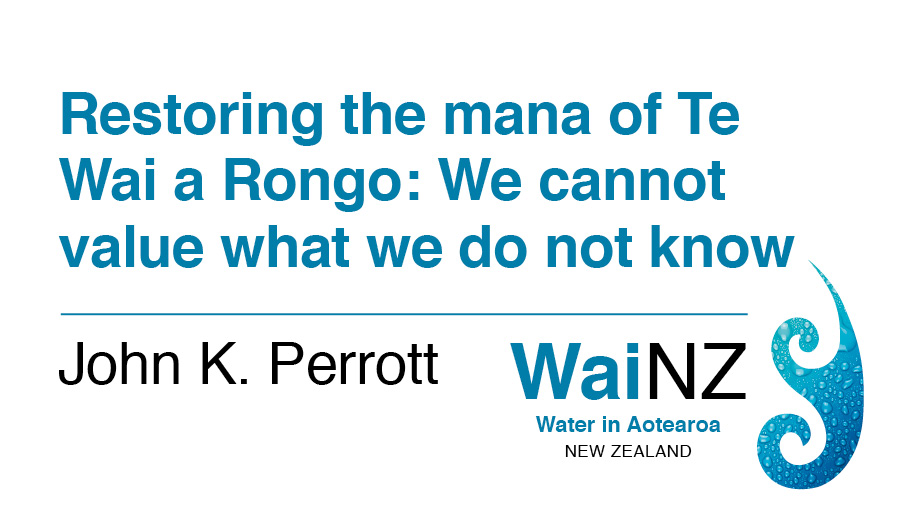
Restoring the mana of Te Wai a Rongo: We cannot value what we do not know
My kaupapa focuses on Māori perceptions associated with the environment, especially freshwater. I wish to impress upon you why the preservation of freshwater is a property rights issue, guaranteed by the Te Tiriti o Waitangi¹, and not an issue of race or ownership. Consequently, I argue that tino rangatiratanga as guaranteed to Māori, and ownership are not the same thing.
It is ironic that New Zealand was sold to English settlers by their peers and settled on the promise of quality soil and clean water. This is because since the signing of the Te Tiriti o Waitangi there has been unprecedented ecological destruction wrought by our mismanagement of water and land in the name of progress.
Protecting our waterways helps to keep Māori culture alive
Māori concerns around land and water policy have always been about affirming tribal proprietary rights guaranteed under the Te Tiriti o Waitangi. Freshwater will always be a taonga and cultural icon to all Māori. The guardianship of freshwater is about keeping alive Māori culture e.g., traditional mātauranga (knowledge), tikanga (protocols) and wairuatanga (Māori spirituality). Many of our sacred tikanga, such as blessings and healing protocols cannot be performed using polluted water. Guardianship of freshwater is more about keeping alive these tikanga, mātauranga and wairuatanga than the concept of ownership in New Zealand law. The draining, altering and pollution of our waterways are opportunities lost to Māori.
Polluted water is an insidious form of colonisation that denies Māori access to their rights, resources and identity. Māori tikanga and kawa, and environmentalist aims around the conservation of water are partly merging; this is mostly in response to the largely negative impact this goal of progress has had on tangata Māori and our natural ecosystems. A fundamental difference between the two groups, however, is the Māori connection via the personification of nature, which is central to Te Ao Māori (the Māori worldview).
Non-Māori often struggle to understand the personification concept, which is part of Māori identity and sense of belonging. Many non-Maori in New Zealand share this sense of place and connection when a water body is pristine and share a sense of shame, loss, revulsion and disconnect when one is degraded by weeds and pollution. This personification arises from the ontological basis of Māori knowledge- specifically the cosmological foundations for Māori beliefs and action.
The personification of water is a powerful spiritual and emotional connection to nature
Nature- or more accurately Papatūānuku, is our source and end, we are all nurtured by and born upon water, we are all composed mostly of water, and to many Māori we depart on water on our way to the afterlife. To iwi, this personal connection is more a tuakana-teina or senior-junior relationship than a western ownership concept. The water body is the tuakana and we are the junior teina. The tuakana-teina perspectives puts into order those things that can be controlled and those things that are too senior or great to be controlled or ‘owned’. Bottling freshwater, or putting it into other containers will not change this tuakana connection.
To develop a personal connection with water is to take up the challenge of kaitiakianga (guardianship). For instance, when a New Zealander is being reflective while looking at our land and waterscapes, he or she may be musing, “this is beautiful”. However, if one is Māori, one is looking at oneself. We are looking at the sources from which we descend, we are reflecting on our own tīpuna (forebears).
When being reflective and caring about Māoritanga we are also mindful of the values and ideas embodied in wairuatanga, like using water for sacred purposes. If you are looking down into water and contemplating, you see your reflection. In Māori terms, that reflection is your tapu-self, our reflections have moko, because in the traditional Māori worldview, that taonga is you. That is the little thing that makes us feel a bit different from all those worthy government environmentalists, ecologists and conservation biologists striving to protect and nurture our tīpuna. (Sir Tipene O’Regan 1984).
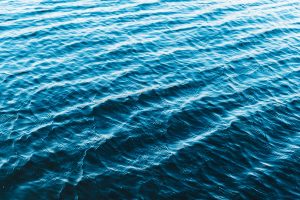
While looking at our land and waterscapes, Māori look inward, reflecting on one’s own tīpuna (forebears).
I am not suggesting that because something is sacred it cannot be used, quite the opposite. Māori have always sought balance, combining old ways of knowing with new ways of doing. What Māori are increasingly saying, is that Te Ao Māori has to be recognised. Māori perceptions must have status in the decision making process if Māori and mātauranga are to be part of the solution.
When the Polynesian explorers first arrived on these shores around 1,000 years ago they were island hoppers and sophisticated resource strippers. It took the best part of another 500 years for Māori culture to evolve the appropriate ecological knowledge and conservation ethic to survive post-megafauna extinctions in Aotearoa. From these lessons we developed important tikanga and wisdom e.g., kaitiakitanga and mātauranga Māori, lessons still relevant today because the stakes are still the same. Extinction.
John K. Perrott
About:
John K. Perrott is Associate Director, Institute of Applied Ecology, Head of Postgraduate Research, School of Science, and Mātauranga Māori Engagement Manager, Research and Innovation Office at the Auckland University of Technology.
Footnote
¹ The term Te Tiriti o Waitangi refers to the Māori version of the Treaty of Waitangi, not the English version. In the Māori text, of Article 2 of te Tiriti, Māori were guaranteed ‘te tino rangatiratanga‘ or the unqualified exercise of their chieftainship over their lands, villages, and all their property and treasures. This would have included water.
Reference
Sir Tipene O’Regan (1984). Māori perceptions of water in the environment. Centre for Māori Studies and Research, University of Waikato, Hamilton, New Zealand. Occasional Paper No. 27.
Acknowledgments
This document was a team effort and I wish to thank the following for their contributions – the late Kaumātua John Marsh, Prof Pare Keiha, Prof Doug Armstrong, Dr Valance Smith, Kaumātua Hare Paniora, Dr Marama Muru-Lanning, Wendy French, Catherine Redmond, and Liana de Jong.
What is WaiNZ?
Kia ora, Aotearoa. We’ve asked leading environmental, social and health researchers to share their personal and professional perspectives about the state of our water and what water means to us as New Zealanders. Follow their blogs right here at tepunhahamatatini.ac.nz and across social media with #WaiNZ.
Where possible, commentary will be backed up by data from Figure.NZ. Their incredible charts are based on data sourced from public repositories, government departments, academics and corporations. Check out their #WaiNZ data board and sign-up to create your very own data board on any topic that interests you.
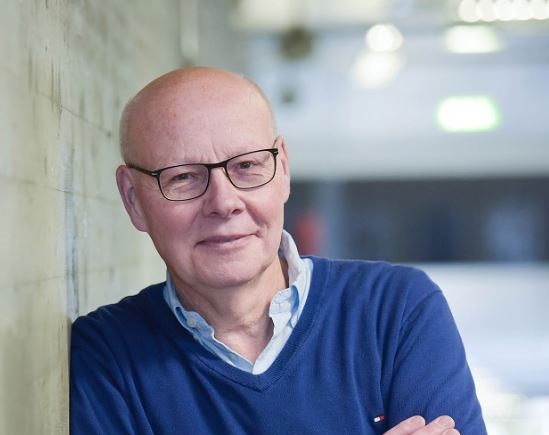
How we make trust judgments when it comes to scientific information
It is often difficult to find accurate information online, especially when it comes to science-based questions. This is amplified by the fact that scientific findings themselves are revisable or when they are the subject of debate within their respective fields. However, not being able to find concrete answers to scientific questions may lead the public to question and discount the general veracity of science.
Te Pūnaha Matatini invites you to a free lecture by Professor Rainer Bromme, Senior Professor for Educational Psychology, University of Münster, Germany, who will provide an overview of data collected from surveys in multiple countries on the public’s trust in science, and also discuss research on peoples’ capacities to make trust judgments.
In the best case scenario, such judgments are not based on gullible faith in ‘science’, but rather rest on informed trust. Such trust judgments are based on a general understanding of both sides of science as: a system of knowledge and methods for understanding the world and as a social institution for the production and distribution of such knowledge.
Event: The ingredients of informed trust: What citizens (need to) know for coping with science experts
Guest Speaker: Professor Rainer Bromme, Senior Professor for Educational Psychology, University of Münster, Germany
Speaker panel:
- Professor Shaun Hendy, Department of Physics, University of Auckland (MC)
- Associate Professor Nicola Gaston, Department of Physics, University of Auckland
- Dr Daniel Hikuroa, Senior Lecturer, Māori Studies, University of Auckland
- Dr Cate Macinnes-Ng, Senior Lecturer, School of Biological Sciences, University of Auckland
Location: Auckland Museum
Date & time: Wednesday 25th October from 6-8pm
Tickets are free but bookings are essential.
Please email membership@aucklandmuseum.com or register here to book tickets.
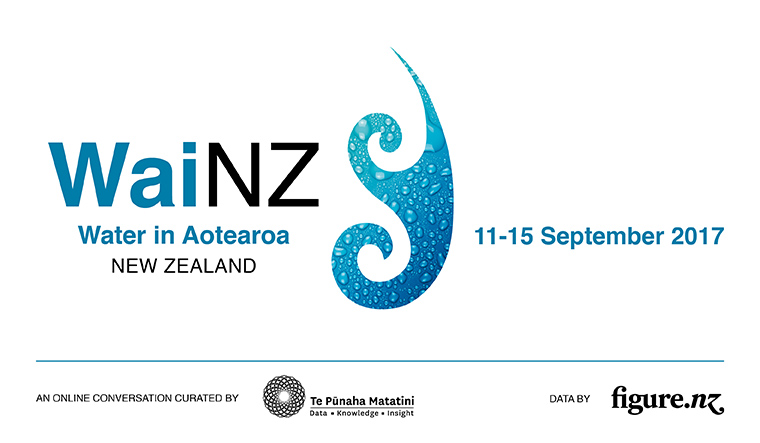
Ngā mihi ki a tātou
Kia ora mai tātou,
Ngā mihi ki a tātou.
Tuatahi – tēnei te mihi nui ki ngā kaikōrero, mō rātou whakaaro, moemoea, wawata.
First – our huge thanks to the contributors, for their thoughts, dreams, aspirations.
Tuarua – tēnei te mihi ki a koutou katoa, mo to koutou tautoko.
Second – thanks to all of you who have participated.
Tuatoru – he mihi tino nui ki a FigureNZ mo tō rātou tautoko me pukengatanga o tēnei mahi whakahirahira.
Thirdly – a huge thank you to FigureNZ for their support and expertise on this important work.
We hope the stories that have been shared on WaiNZ have invoked some feelings in you. I certainly have traversed the full range of emotions – anger, disgust, sadness, frustration and despair at the state of water in Aotearoa New Zealand, described in the blogs. But those emotions were tempered with surprise and joy in formative memories shared, and in the collective message of hope for better outcomes for water, and with that hope I trust that we can make better decisions. My anticipation for those better decisions is almost palpable.
I want to expand on some recurring themes that flowed through the blogs. One of those is mauri, the capacity for air, water or soil to support life, the physical life principle, the spark of life. Mauri is a universal concept in Māori thinking and part of a holistic system, expressed beautifully in the idiom – ki uta, ki tai (from the mountains to the sea) – meaning what we do on land impacts the oceans. What is unwritten, but is implicit, is that it is our waterways that provide that connection. If our waterway is muddy – the mauri is compromised; if our waterway is choked with weed – its mauri is comprised; if our waterway is poisoned with pathogens or chemicals – its mauri is compromised; if you drink water and it makes you ill – its mauri is compromised; if our waterway only flows sporadically, or doesn’t flow at all – its mauri is compromised.
We don’t need techno-scientific data to tell us that it is compromised – we can see it, we can feel it. So, although mauri is a Māori word, it is a universal concept and, as many of us have seen and felt, the mauri of the majority of our waterways and increasingly our beaches, estuaries, harbours and oceans has been compromised. The hope I referred to earlier can be activated here – Te Mana o te Wai, for example, is conceptualised in terms of mauri. Mike Joy highlights concerns with the way that water data is represented. However, muddy rivers like those Mary Sewell spoke about don’t lie, rivers choked with weed don’t lie, rivers that are no longer there don’t lie, Siouxsie Wiles informed us about New Zealanders suffering from water-borne diseases that don’t lie, and as Tara McAllister showed us, dogs dying from eating toxins produced by Phormidium don’t lie. So while the empirical data being collected and (mis)represented is of concern, we can realise our own agency by drawing on our own collective experience and observations. Two great examples of where this is happening right now are shared by Ani Murchie and David Hamilton in Waitaha Canterbury and Waiariki, respectively.
The stark reality is that our waterways have been severely degraded and continue to be polluted. The Freshwater Rescue Plan Marnie Prickett discusses provides a beacon of hope, and appears to reflect and align with the hopes and aspirations of many New Zealanders.
I am also concerned with the way we treat water in our urban environments – as a nuisance, something to be controlled, and as a medium to transport our human waste. Civil engineering was once defined as ‘harnessing the powers of nature for human benefit’, however while definitions evolve with human understanding, some practices have not. The continued capture, control and burial of natural water courses is an example of the practice failing to stay abreast of evolving understandings and renewed relationships we seek with our waterways, our ancestors. We need to shift our thinking, as Auckland, for example, persists with live burial of natural water courses in new subdivisions while sporadic stream daylighting projects are show-cased as best-practice. We need to shift thinking away from the idea that ‘we only capture a small percentage of freshwater – the rest is wasted’. The Te Pūnaha Matatini project ‘Mai i ngā maunga ki te tai’ that is about to start is an example of shifted thinking – we draw from mātauranga Māori and complexity science.
We can do this New Zealand, and in fact we must.
Tuturu whakamaua kia tina, haumie, hui e, taiki e.
Siouxsie and Dan
About:
Dr Daniel (Dan) Hikuroa, a Principal Investigator at Te Pūnaha Matatini, is an earth systems scientist at the University of Auckland who integrates mātauranga Māori (Māori knowledge) and science to realise the dreams and aspirations of the communities he works with. Dan’s many projects include the co-writing of the 2014 State of the Hauraki Gulf Environment Report.
Dr Siouxsie Wiles is Deputy Director (Outreach and Public Engagement) of Te Pūnaha Matatini. She describes herself as a microbiologist and bioluminescence enthusiast. As Head of the Bioluminescent Superbugs Lab at the University of Auckland, Siouxsie combines her twin passions to understand the interplay between environment and infectious diseases.
What is WaiNZ?
Kia ora, Aotearoa. We’ve asked leading environmental, social and health researchers to share their personal and professional perspectives about the state of our water and what water means to us as New Zealanders. Follow their blogs right here at tepunhahamatatini.ac.nz and across social media with #WaiNZ.
Where possible, commentary will be backed up by data from Figure.NZ. Their incredible charts are based on data sourced from public repositories, government departments, academics and corporations. Check out their #WaiNZ data board and sign-up to create your very own data board on any topic that interests you.
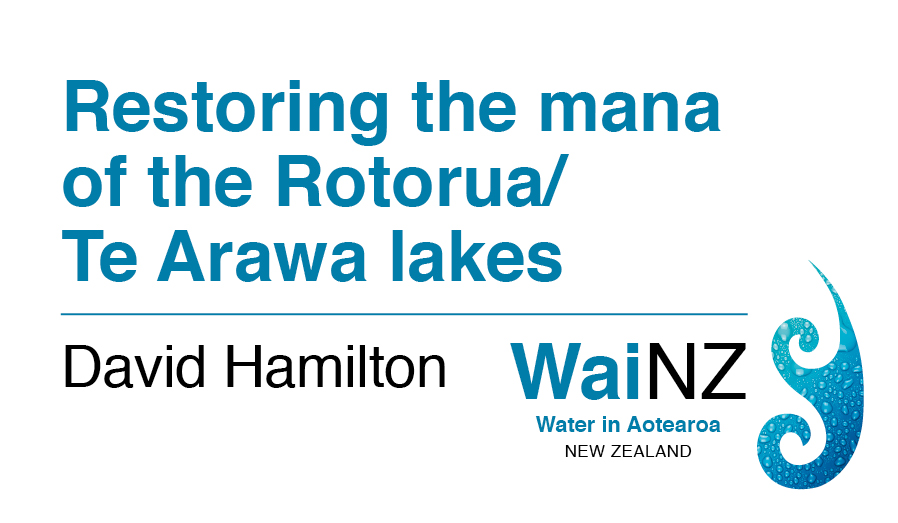
Restoring the mana of the Rotorua/Te Arawa lakes
Something interesting has been happening in the Rotorua/Te Arawa lakes over the past decade or so. Instead of separating into factious groups, government, NGOs, iwi, members of the farming community, scientists and the wider community have united in kōrero and actions to support restoration efforts on the lakes. Perhaps this is a model for Aotearoa to follow?
This whakarāmemene has been made possible by a number of interesting developments. Leaders such as Dr Ian Kusabs (Ngāti Tūwharetoa, Te Arawa, Ngāti Maru) have been researching and practicing mātauranga Māori and indigenous fisheries (kaimoana) management in the Rotorua/Te Arawa lakes in recent years. This work not only provides a means for iwi and hapū to exercise mātauranga but it is now being recognised as a scientifically defensible method to compliment conventional water quality indicators and better describe the health and wellbeing (i.e., the mauri) of the lakes. These types of models are desperately required for the goals of Te Mana o Te Wai to be exercised and achieved as part of the National Policy Statement for Freshwater Management (2017).
The community-led Lakes Water Quality Society has had a long history of involvement in protection and restoration of the Rotorua/Te Arawa lakes, through its own leaders, including Ian McLean and John Green. More recently, it has reached out to engage local kaumātua, for example Sir Toby Curtis, Willie Emery, Dr Ken Kennedy, Tai Eru and Geoff Rice. These kaumātua bring new perspectives akin to ‘ki uta ki tai’ and recognising that the restoration of the lakes is just the beginning with efforts that must extend across all rohe, from the top of the catchment to the receiving moana.
Farming groups in the Rotorua/Te Arawa lakes have adopted a highly science-based perspective in their own practices. They are cognisant that the lakes are tohu (indicators) of their own activities, with the mauri of the lakes reflecting the efficiency of their farming activities within the lake catchments. Farming leaders such as Chris Sutton, in the Lake Rerewhakaaitu catchment, have pushed through the initial resistance to change of farmers in this catchment. This farmer group is now starting to drive the regional management authority, Bay of Plenty Regional Council, to do things better; to implement well-informed plans and policies that allow them to simultaneously manage their business and be involved in lake management under a stable regulatory environment.
Regional and local governments have also engaged with the community more than ever before. They have had the benefit of a stable, evidence-based approach from science providers such as the University of Waikato, NIWA and GNS. Their own leaders, such as Andy Bruere from the Bay of Plenty Regional Council, have also recognised the importance of engagement with iwi and the local community, using hui to listen attentively to the needs and aspirations of iwi and hapū, as well as the local community. This is no longer consultation; this is full immersion and collective decision making.
Connecting these pillars for effective lake management will always be challenging, but the features of the Rotorua/Te Arawa Lakes Program need to be examined and propagated more widely. To provide a final perspective, we should examine the goals of the Rotorua/Te Arawa Lakes Strategy Group which was established between Rotorua District Council, Te Arawa Lakes Trust and the Bay of Plenty Regional Council to provide leadership for restoring the lakes:
Me huri whakamuri, Ka titiro whakamua
In order to plan for the future, we must look to the past
David Hamilton
About:
David Hamilton is the current Deputy Director of the Australian Rivers Institute, Griffith University, Brisbane. He served as the inaugural Bay of Plenty Regional Council Chair in Lake Restoration, University of Waikato, for 15 years (2002-2017) following 12 years at the Centre for Water Research, University of Western Australia, and PhD study on shallow lakes at the University of Otago. He has more than 250 publications in the area of lake restoration and biogeochemical processes in aquatic systems, and has provided research supervision to a large number of PhD, Masters and Honours students.
What is WaiNZ?
Kia ora, Aotearoa. We’ve asked leading environmental, social and health researchers to share their personal and professional perspectives about the state of our water and what water means to us as New Zealanders. Follow their blogs right here at tepunhahamatatini.ac.nz and across social media with #WaiNZ.
Where possible, commentary will be backed up by data from Figure.NZ. Their incredible charts are based on data sourced from public repositories, government departments, academics and corporations. Check out their #WaiNZ data board and sign-up to create your very own data board on any topic that interests you.
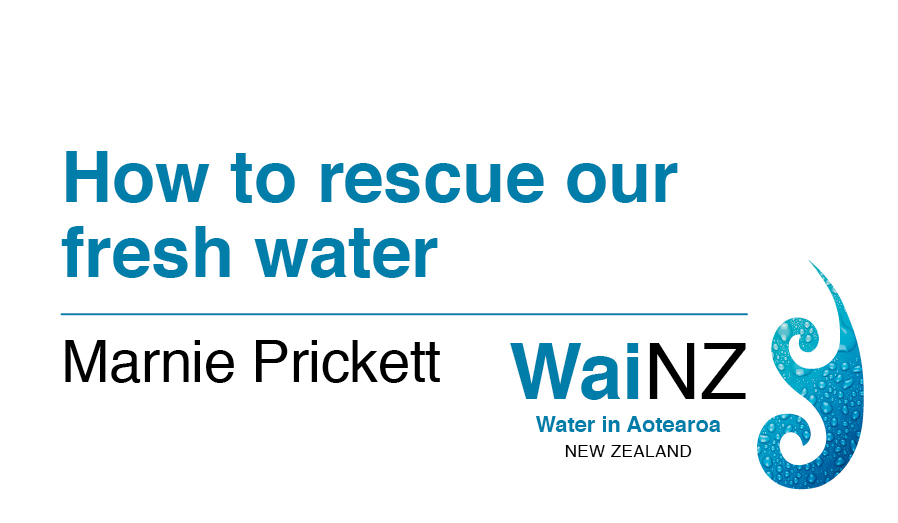
How to rescue our fresh water
New Zealand has a freshwater crisis. There is little doubt about this now as report after report has piled up over the last year. National and international research reaches the same conclusion.
In an interview on his own report on the state of the country’s fresh water, the Prime Minister’s chief science advisor Sir Peter Gluckman said: “the reality is we cannot keep going as we have been.”
The challenges of rescuing our waterways
What are the challenges we must overcome to rescue our waterways? For those less well versed in New Zealand’s freshwater problems, an excellent place to start is the Parliamentary Commissioner for the Environment’s 2012 publication, “Water Quality in New Zealand: Understanding the Science”.
In this accessible and easy-to-read document, Dr Jan Wright and her team outline the major pollutants of Aotearoa’s waterways: pathogens, sediment and nutrients. To summarise briefly (and not exhaustively): pathogens make people sick, sediment smothers habitat and makes it hard for aquatic life to function, and unnaturally high nutrient levels drive excessive plant growth, including algal blooms that can starve aquatic ecosystems of dissolved oxygen.
There are further pressures on our suffering waterways, such as water extraction, the artificial straightening and piping of once beautiful winding and wandering streams, and the destruction of wetlands (which are often described as the kidneys of the land).
Some alarming statistics can tell part of the story of what has been done to our waterways.
- 74% of New Zealand native fish are threatened or at risk of extinction.
- 23% of New Zealand’s monitored groundwater sites are too high in pathogens for human consumption.
- 70% of New Zealand’s rivers fail the Ministry of Health’s recreational contact guidelines.*
- 90% of New Zealand’s wetlands have been drained or filled.
- 32% of monitored lakes are now classed as polluted with nutrients.
What can be done?
You could be forgiven if you feel overwhelmed by the enormity of the problem, especially given that, in the case of nutrient pollution particularly, scientists believe it’s going to get worse before it gets better.
But like any serious problem, it can be broken down and addressed step by step. While it will take some time to deal with our legacy of poor land and water management, we can (and must) take steps now to prevent the situation from escalating further.
Importantly, individual action is only part of the solution. Community tree planting and minimising domestic water use should always be encouraged but, because of the extent and drivers of our freshwater problems, it is the Government that now has the most crucial role to play in addressing this crisis.
So, again, what can be done?
In June this year, academics from a range of disciplines (freshwater ecology, Māori, Pacific and indigenous studies, public health) alongside major tourism, environmental, recreation and public health organisations joined together to launch the Freshwater Rescue Plan. The original group behind the plan has since been joined by a further eight organisations and support continues to grow.
The Freshwater Rescue Plan presents seven steps the Government can take immediately to address New Zealand’s freshwater crisis.
These seven steps are not a 100-year plan but simply the actions that the Government elected in September 2017 should take immediately to start turning this desperate situation around. So, what are the seven steps?
A seven-step plan
- Set strict and enforceable water quality standards, based on human and ecosystem health limits.
- Withdraw all public subsidies of irrigation schemes.
- Invest in an agricultural transition fund, to support the country’s shift away from environmentally-damaging farming methods by redirecting $480 million of public money earmarked for irrigation.
- Implement strategies to decrease cow numbers immediately.
- Reduce freshwater contamination by instigating polluter pays systems nationally.
- Address the performance of regional councils on improving water quality through quarterly reports to the Ministry for the Environment on enforcement, breaches and monitoring.
- Adopt OECD recommendation to establish a “whole-of-government multi-stakeholder process to develop a long-term vision for the transition of New Zealand to a low-carbon, greener economy.”
Sir Peter Gluckman is right. The reality is we cannot keep going as we have been.
However, it became clear to many following the Government’s “Clean Water Package” announcement in February (which included worsening our national swimming standards) that the government was stalling on tackling the problem of our polluted rivers, lakes and aquifers.
The current Government still appears to be unwilling to face the difficult truths outlined in this year’s numerous freshwater reports, particularly the OECD’s Environmental Performance Review of New Zealand, that our coupling of economic growth with natural resource use (notably, in the case of water, in relation to the expansion of intensive agriculture) has pushed the country to its environmental limits.
Prime Minister Bill English said, in response to the OECD findings and common suggestion that they were an indictment on National’s economic strategy, “I don’t agree with that. We’ve got economic growth, which was always going to have a strong agricultural production base.”
He went on to say: “We are not willing to make rules that slash our agricultural community – that’s not going to happen.”
But good rules and regulation don’t “slash”. Effective rules support and encourage people to be responsible and act in ways that benefit the common good (like having appropriate speed limits on our roads, for example).
How will the seven-step plan work?
The Freshwater Rescue Plan starts at the most obvious point – our freshwater policy – where human and ecosystem health should determine the limits we set for the major pollutants the Parliamentary Commissioner for the Environment identified. We have these limits for pathogens, where swimmable is our bottom line and Massey University’s Professor Russell Death’s work has identified deposited sediment and nutrient limits for functioning ecosystems.
Step two of the plan calls for the withdrawal of the almost half a billion dollars of public money currently allocated to large-scale irrigation schemes, as these are a driver of intensive agriculture and intensive agriculture is associated with worsening water quality. We don’t want to go backwards.
Going forwards, we want to support and encourage the right kind of change so the plan suggests reallocating the $480 million currently allocated to irrigation to an Agricultural Transition Fund to support farmers and other primary industry players in the move away from environmentally-damaging practices and models.
Step four is a necessary acknowledgement that the size of the national dairy herd is putting considerable strain on waterways. A reduction in cow numbers would likely be achieved by Step five of the plan. This identifies the mechanism of polluter pays systems which, according to the work of the OECD, would drive innovation in urban and rural pollution mitigation (although there are further mechanisms to reduce cow numbers such as moratoriums and land suitability mapping that could also be introduced).
The plan calls for necessary data collection on the performance of our regional councils (the environment’s “Last line of Defence”) through quarterly reporting to the Ministry for the Environment. Like District Health Boards that also report quarterly to their ministry, this is to ensure that regional councils’ performance can be audited and compared nationally and inadequacies in monitoring, compliance and enforcement identified and acted on by central government.
Finally, we must plan for the future. Following again the advice of the OECD, the Freshwater Rescue Plan establishes as its seventh step a whole-of-government process to develop a long-term vision for the transition of New Zealand to a low-carbon, greener economy.
We cannot keep going as we have been. And we don’t have to.
Marnie Prickett
Footnote
*Using NIWA’s 2017 technical report, and avoiding statistics the current Government produced earlier this year in its “Clean Water Package” which use their weakened swimming standards and only apply to a particular proportion of New Zealand rivers, giving the effect of a higher pass rate.
About:
Marnie Prickett is an organiser and spokesperson for Choose Clean Water, a campaign aiming to strengthen New Zealand’s fresh water policy in order to protect and restore the country’s waterways. Marnie’s background is in environmental education and horticulture. She recently completed a Bachelors of Agricultural Science at Massey University and began a Masters degree on water quality management at Molesworth Station.
What is WaiNZ?
Kia ora, Aotearoa. We’ve asked leading environmental, social and health researchers to share their personal and professional perspectives about the state of our water and what water means to us as New Zealanders. Follow their blogs right here at tepunhahamatatini.ac.nz and across social media with #WaiNZ.
Where possible, commentary will be backed up by data from Figure.NZ. Their incredible charts are based on data sourced from public repositories, government departments, academics and corporations. Check out their #WaiNZ data board and sign-up to create your very own data board on any topic that interests you.
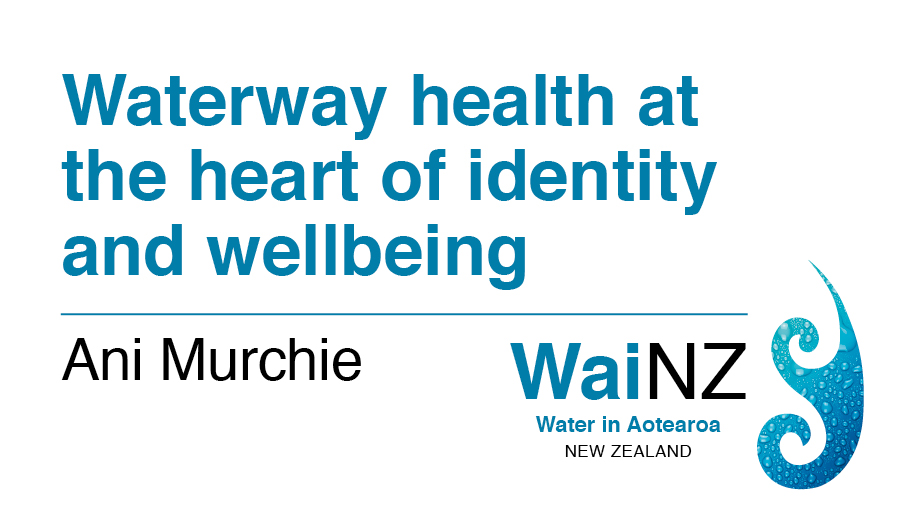
Waterway health at the heart of identity and wellbeing
Toitū a Tāne, toitū a Tangaroa, toitū te tangata
The endurance of man relies on that of the environment.
Waterway health is at the heart of identity and wellbeing. Signs restricting beach and river swimming or wading, and fish consumption, are becoming common sights across Aotearoa. So often missed, however, is how we may support existing kaitiaki and community groups to improve our environmental footprint.
Through my experience as a researcher in estuarine and coastal systems, the local hapū, iwi, and community residential groups are drivers of change. They hold long-term place-specific ecological knowledge and mātauranga Māori that benefits environmental management.
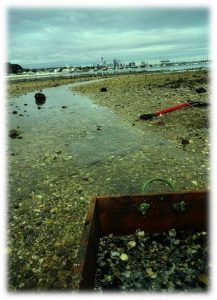
Image 1. Surveying shellfish beds at Ōkahu Bay, Tāmaki Makaurau, Auckland (photographed by Ani Kainamu Murchie).
In Aotearoa, we acknowledge our inextricable connectedness with our environment, from land-to-sea. Tangata whenua literally translates to ‘people of the land’, which beautifully captures the reciprocal relationship between people and their environment. Tangata whenua and non-Māori New Zealand residents identify with our riverine and coastal nation. They provide sustenance, leisure, amenities, identity and wellbeing.
Human land-uses and activities affect environmental health, and this subsequently affects socio-cultural and ecological values. Much like the environmental impacts across the globe, our national waterbodies have come under pressure due to anthropogenic impacts. Our water-bodies, in particular estuaries and harbours are major focal points of human settlement or high-intensity rural land-uses (see Image 2).
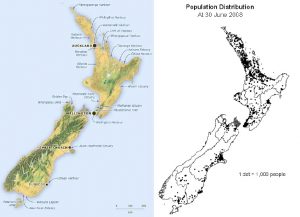
Image 2. The major estuaries (left) and population density in 2008 (right) in New Zealand. Images sourced from Te Ara and Statistics New Zealand.
The current management system in New Zealand does not treat freshwater and estuarine systems (including harbours) as integrated ecosystems; the latter is managed as coastal systems.
My research within Waitaha Canterbury and O`ahu Hawai`i was based on the Indigenous environmental approach ki uta ki tai and ma uka ma kai, by Ngāi Tahu and Kanaka Maoli respectively. Both literally mean ‘from inland-to-sea’; and ‘inland’ zone includes the mountain ranges. This approach captures the integrated nature of terrestrial, freshwater, estuaries and harbours. Ki uta ki tai, and ma uka ma kai, also includes people within this environmental principle practice.
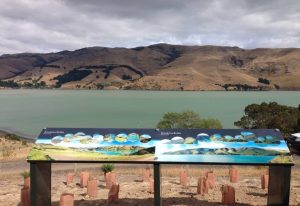
Image 3. Koukourārata, also known as Port Levy, with catchment replanting from land-to-sea (photographed by Ani Kainamu Murchie).
Community cohesion within management is fundamental towards adaptive and sustainable solutions; and legal protection to these environments takes time and effort. Existing mātaitai reserves are the result of long-term commitment (sometimes 10+ years!) by local iwi and communities. The protection of these places benefits the socio-cultural and ecological values of estuaries and coasts in Aotearoa. Therefore, the sustainability of cultural-ecological systems (e.g. shellfish beds, wild-caught fish, fishpond culturing) rely on the commitment of local community efforts.
Although, current management protocols protect us from human health hazards, by closing sites from either harvesting shellfish or swimming or both; this also disconnects people with place. Consequently, this erodes long-term ecological knowledge, mātauranga, and the application of these within local management. Rather, local and indigenous people’s ecological indices are vital towards more adaptive management.
In conclusion, iwi, hapū, and local resident communities are committed to caring, stewarding, and protecting the health of their local environment. There are a number of ways we as individuals, researchers, and government bodies can assist with local iwi and community kaitiakitanga, which ultimately provides for our wellbeing.
Toitū a Tāne, toitū a Tangaroa, toitū te tangata.
nā Ani Kainamu Murchie
About:
Ko Ani Kainamu Murchie tōku ingoa, he uri ahau nō Ngāpuhi, Ngāti Kahu ki Whangaroa, me Kōtirana. I have a background in both te Ao Māori and te Ao Pākehā, through attending kōhanga reo, kura Māori, Māori and Marine studies at tertiary level, with national and global education and experiences. Like many New Zealanders my whānau are very fond of spending time near and on the water, from leisurely strolls, harvesting, to paddling waka ama. I am passionate about our connection to the environment, and particularly at the local iwi and community levels. My graduate research has focused on shellfish ecological and sociocultural values to better inform management. I have recently completed my PhD in Environmental Sciences at the Ngāi Tahu Research Centre and School of Biology of the University of Canterbury. I am also an Alumni of the Fulbright Science and Innovation Award (2013) and First Nations Futures Programme Alumni at Stanford University.
What is WaiNZ?
Kia ora, Aotearoa. We’ve asked leading environmental, social and health researchers to share their personal and professional perspectives about the state of our water and what water means to us as New Zealanders. Follow their blogs right here at tepunhahamatatini.ac.nz and across social media with #WaiNZ.
Where possible, commentary will be backed up by data from Figure.NZ. Their incredible charts are based on data sourced from public repositories, government departments, academics and corporations. Check out their #WaiNZ data board and sign-up to create your very own data board on any topic that interests you.
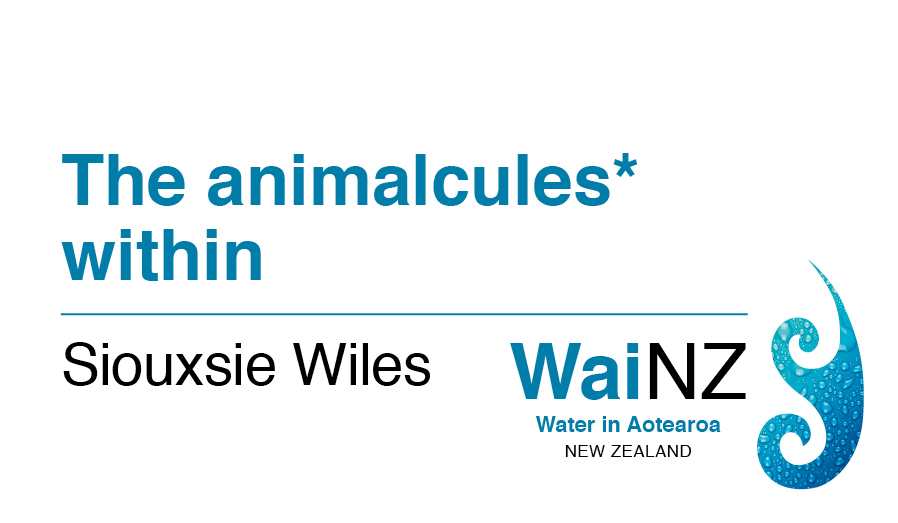
The animalcules* within
*Animalcules is the name that Antonie van Leeuwenhoek, a Dutch draper, gave the organisms he saw when he first looked at a drop of pond water using one of his handcrafted microscopes in the 1670’s.
My connection with water over the years
When I think back to my childhood and the body of water that I identify with most, it’s the swimming pool we were lucky enough to have in our back garden. I remember the excitement of watching it being built, and the hours and hours my brother and I spent swimming in it.
I grew up in Johannesburg, a large South African city over 1,700 metres above sea level. A trip to the beach meant a 7 to 8-hour car ride to Durban, usually done overnight, presumably to minimise the amount of time my parents had to listen to my brother and I bickering. Hence the swimming pool.
In my teens, my family moved to the east coast of Yorkshire in the UK. Trips to the beach were much closer now, but I never really took to the cold grey salty sea. Too busy selfishly pining for our swimming pool.
It’s taken moving to the other side of the world for me to properly connect with natural bodies of water. It’s here in Aotearoa New Zealand that I’ve come to love the little spot near Henderson where I was shown the world’s only known species of bioluminescent freshwater limpet. Latia produces a glowing mucus when disturbed, probably to startle or distract potential predators. This country also has an abundance of streams that provide a habitat for all the small flying insects that our spellbinding glow worms feed on. Finding such a stream just a short walk from where I work has made me very happy indeed.
Health risks of swimming in streams in Aotearoa New Zealand
As well as making us happy, these streams can also make us very sick. In 2014, water and food-borne infections were responsible for 15,582 hospitalisations and 62 deaths in New Zealand. Organisms like Campylobacter jejuni, Giardia intestinalis, Salmonella, Yersinia, Cryptosporidium, toxin-producing Escherichia coli, rotavirus, norovirus, and hepatitis A. Some of these organisms are found in our lakes, rivers and streams; others live in the intestines of humans and animals, and can make their way into our lakes, rivers, streams and even drinking water supplies.
That’s what happened in Havelock North in August 2016. More than a third of the town’s residents were struck by campylobacteriosis caused by C. jejuni, a helical-shaped bacterium commonly found in animal faeces. People with campylobacteriosis can experience a week of cramping abdominal pain and watery or bloody diarrhoea, as well as fever, nausea, and vomiting. For some, there can be long-term consequences, including Guillain–Barré syndrome (in which the immune system damages the nerves that join the spinal cord and brain to the rest of the body), reactive arthritis, and irritable bowel disease.
The Havelock North Campylobacter outbreak was the largest we’ve ever had in New Zealand; an estimated 5,530 people had symptoms of campylobacteriosis, 45 ended up being hospitalised, and two elderly people died. Somehow the town’s water supply had become contaminated with C. jejuni from sheep grazing in a nearby paddock.
My own experience catching giardiasis
Since moving to New Zealand, I’ve had first-hand experience, not of campylobacteriosis, but of giardiasis caused by the parasite G. intestinalis. In fact, I’ve had it three times! Giardiasis is a notifiable disease in New Zealand so three times I’ve had a letter from the Ministry of Health admonishing me for catching this parasite and detailing how not to spread it to other people (basically wash your hands really well, and don’t swim if you have diarrhoea…).
In my case, I don’t think I caught it from swimming in a lake or river, but from drinking (apparently filtered) tank water. In 2016, 1,617 people had giardiasis in New Zealand. According to Wikipedia, people infected with Giardia can remain symptom-free or end up with weeks of diarrhoea, nausea and abdominal pain. Symptoms are caused by Giardia infecting the cells of the intestine and blocking nutrient absorption. Apparently, some people can also become either temporarily or permanently lactose intolerant as a result!
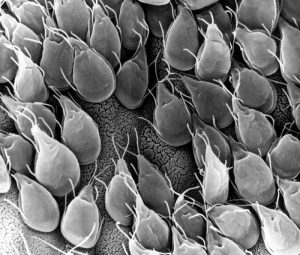
Giardia parasites attached to the intestinal cells of a gerbil. By Dr. Stan Erlandsen (1988) – Public Health Image Library (PHIL).
An unplanned contribution to the literature
It turns out my Giardia-infested stool samples may have contributed to a scientific paper. Juan Garcia-R and colleagues wanted to see how genetically variable the Giardia parasites are here compared to other countries, so various diagnostic labs around the country sent them fresh faecal samples from some (13%) of the symptomatic people with notified giardiasis cases between 2009 and 2015. For comparison, they also got faecal samples from farms, zoos, animal hospitals, and urban wildlife. I wonder if I had the same Giardia parasite as the gibbon or the meerkat?!
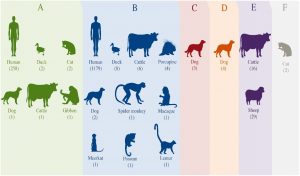
Range of hosts and assemblages (A to F) of Giardia intestinalis found in New Zealand. The number of samples by hosts identified within each assemblage is in brackets. Garcia–R JC, et al. (2017). PLoS Negl Trop Dis 11(7): e0005736.
Siouxsie Wiles
About:
Dr Siouxsie Wiles is Deputy Director (Outreach and Public Engagement) of Te Pūnaha Matatini. She describes herself as a microbiologist and bioluminescence enthusiast. As Head of the Bioluminescent Superbugs Lab at the University of Auckland, Siouxsie combines her twin passions to understand the interplay between the environment and infectious diseases, and to discover new antibiotics. In April 2017, she published her first book, ‘Antibiotic resistance: the end of modern medicine?’, as part of Bridget Williams Books’ BWB Texts series.
What is WaiNZ?
Kia ora, Aotearoa. We’ve asked leading environmental, social and health researchers to share their personal and professional perspectives about the state of our water and what water means to us as New Zealanders. Follow their blogs right here at tepunhahamatatini.ac.nz and across social media with #WaiNZ.
Where possible, commentary will be backed up by data from Figure.NZ. Their incredible charts are based on data sourced from public repositories, government departments, academics and corporations. Check out their #WaiNZ data board and sign-up to create your very own data board on any topic that interests you.
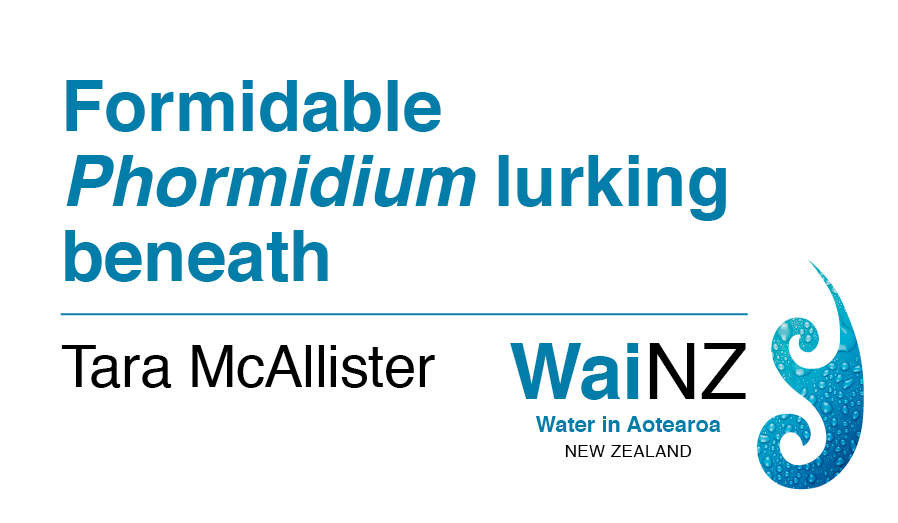
Formidable Phormidium lurking beneath
One of my favourite rivers in the Canterbury region is the Ōpihi River. Its mauri, however, has been eroded and like many of our rivers, it is now a shadow of its former self. Currently, one of the many problems in this catchment is toxic algal blooms. These blooms are formed by Phormidium, which is a type of cyanobacteria (looks like algae but are actually bacteria), that starts off as a tiny microscopic filament and then forms dense, carpet-like mats on the river bed.
Under certain environmental conditions, Phormidium can grow extremely quickly forming black mats that cover the entire river bed. Low and stable flows appear to be a recipe for Phormidium success, however a diverse range of other factors including sediment and nutrients likely to contribute to its success. To complicate matters, the relative importance of each of these factors varies from river to river.
Phormidium can produce powerful toxins which pose a significant threat to human and animal health and the integrity of our freshwater ecosystems. Just one teaspoon of toxic Phormidium can kill a 25 kg dog very quickly. Since the first documented dog death in 1998, over 100 dogs have died in Aotearoa from ingesting Phormidium mats.
While we do not yet fully understand the ramifications of Phormidium blooms for the river itself, we do observe shifts in macroinvertebrate communities and anglers report that trout caught in waters containing Phormidium can taste earthy and smell musty.

The Ōpihi River from above. The road in the middle is State Highway 1 and the darked sections of the river are Phormidium blooms.
Every summer, many New Zealanders are unable to access what I believe is a birth right and swim in their local rivers, due to excessive Phormidium growth. For example, of the 15 sites in the Timaru District that were monitored for cyanobacteria, eleven sites had excessive Phormidium growth between October 2015 and April 2016. Phormidium blooms in the Ōpihi River were particularly bad, with a warning at the State Highway One site in place for over 150 days (17 November 2015 to 28 April 2016).
This issue is not only restricted to the Canterbury region, where there is a high proportion of agricultural land-use, but these blooms occur all throughout Aotearoa and even throughout the world. A recent survey identified 103 rivers in New Zealand had experienced one or more Phormidium blooms between 2009 and 2016. This data only represents the portion of rivers which are monitored, so it is likely that many other unmonitored rivers are also affected by Phormidium.

Rivers in Aotearoa where one or more sites have experienced a Phormidium bloom (which is >20% benthic cover) on at least one occasion between 2009 and 2016.
Since the 19th century, there have been numerous changes to our rivers, which have pushed many beyond their breaking point and as a result we can no longer swim in them, let alone eat kai harvested from them.
I believe that the increasing severity and extent of Phormidium blooms in New Zealand rivers are a symptom of land-use change and the culmination of many alterations to these systems including changes to flow regimes (through water abstraction) and increased sediment, nutrients and water temperatures. All of these changes have made many of our rivers the ideal breeding ground for toxic algae.
Tara McAllister
Useful links
To find out more about Phormidium, here is a review article: http://www.sciencedirect.com/science/article/pii/S1568988316300476 or email tara.mcallister0@gmail.com for a copy.
You can also follow this link https://vimeo.com/160826825 to hear Dr Susie Wood from the Cawthron Institute (Nelson), a world leader in cyanobacterial research, speak about Phormidium.
About:
Tara McAllister is a PhD candidate in the Waterways Centre for Freshwater Management at the University of Canterbury, and is currently investigating the environmental drivers of Phormidium blooms in New Zealand rivers. She also works part-time at Mahaanui Kurataiao Ltd, which is an environmental advisory company established by six Rūnanga in Christchurch.
What is WaiNZ?
Kia ora, Aotearoa. We’ve asked leading environmental, social and health researchers to share their personal and professional perspectives about the state of our water and what water means to us as New Zealanders. Follow their blogs right here at tepunhahamatatini.ac.nz and across social media with #WaiNZ.
Where possible, commentary will be backed up by data from Figure.NZ. Their incredible charts are based on data sourced from public repositories, government departments, academics and corporations. Check out their #WaiNZ data board and sign-up to create your very own data board on any topic that interests you.
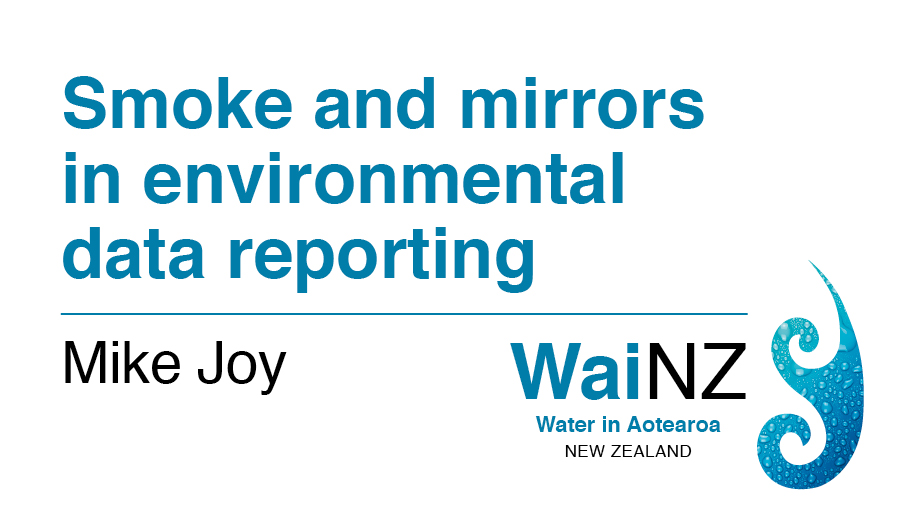
Smoke and mirrors in environmental data reporting
The misuse of scientific data to portray a particular perspective is not unusual in advertising, but the presentation of water quality data by the government in New Zealand is a glaring example of misrepresentation to alter public perception.
Here is one example: figure.nz graphs from the Ministry for the Environment website give average values for a range of water quality parameters. They are presented in the ‘four major land cover classes’: urban, pastoral, native and exotic forest, based on the dominant land cover in the catchment of the site.1
The graphic above clearly shows that for nitrogen – and the other water-quality parameters show a similar pattern – the worst water quality is in urban catchments; the next worse is pasture, then exotic and the best sites are in native forest.
Looking at the graph above, it’s blatantly obvious that Federated Farmers and other industry commentators are right; urban dwellers are our water-quality problem, as urban sites are plainly worse than all the over land cover classes and clearly worse than farming (pastoral).
Unfortunately, that conclusion is almost completely incorrect because what the graphs don’t reveal is that urban waterways make-up less than 1% of the total length of waterways in New Zealand. In contrast, pasture is close to 40% of river length. And because most urban waterways are small, the volumes of pollutants are orders of magnitude less in urban waterways compared to pastoral.
So, while it is a fact that urban sites are on average worse than pastoral sites, there is a big ‘but’ here: urban sites are a minuscule proportion of the length of waterways of New Zealand. This is not to say that we should ignore the urban sites – all waterways need to be protected – but clearly, we should prioritise the biggest problem first.
To correct the misrepresentation in the graph above, the widths of the bars should be made proportional to the total length of waterways in New Zealand they represent. At 0.8% of the total length of waterways in New Zealand, the bars for urban land cover would be so slim they wouldn’t be visible without a magnifying glass.
This anomaly I have highlighted here is very well concealed. Almost every report on the Ministry for the Environment website, and most of the background reports done by NIWA, do not point this crucial detail out. The only paper I could find that does mention it is a 2004 peer reviewed journal article2 and this paper concentrated on lowland rivers and thus reported the proportions of total length in lowland rivers. Despite the fact that nearly all our urban catchments are in lowlands, urban waterways are still only 1.6% of the total lowland waterway length, followed by exotic forest at 6%. Native forest is 18% and pasture is 74%.
This example of a graphical misrepresentation highlights the need for some independent oversight of the data presented by government departments, in this case, the Ministry for the Environment and Statistics New Zealand. It emphasises the need to keep crucial environmental data collection and reporting with an independent body well away from government departments.
These water-quality graphics are a not so subtle but effective way of downplaying the impact of farming on water quality and sadly is just one of many. The sad thing is that it just adds to the confusion and means that farmers don’t get to see the truth and see this misrepresentation of data and rightly feel hard done-by. Even worse, the downplaying of the real problems reduces the chances of anything being done to address them.
Mike Joy
References
- Statistics New Zealand. River water quality: nitrogen. URL: http://www.stats.govt.nz/browse_for_stats/environment/environmental-reporting-series/environmental-indicators/Home/Fresh%20water/river-water-quality-nitrogen.aspx
- Larned, S.T., Scarsbrook, M.R., Snelder, T.H., and Biggs, B.F. (2004). Water Quality on Low-elevation streams and rivers of New Zealand recent state and trends in contrasting land cover classes. New Zealand Journal of Marine and Freshwater Research 38, 347-366.
About:
Mike Joy is a Senior Lecturer in Ecology and Environmental Science at Massey University. He researches and teaches freshwater ecology, especially freshwater fish ecology and distribution, ecological modelling bioassessment and environmental science. His book, ‘Polluted inheritance: New Zealand’s freshwater crisis’ was published by BWB Texts in November 2015.
What is WaiNZ?
Kia ora, Aotearoa. We’ve asked leading environmental, social and health researchers to share their personal and professional perspectives about the state of our water and what water means to us as New Zealanders. Follow their blogs right here at tepunhahamatatini.ac.nz and across social media with #WaiNZ.
Where possible, commentary will be backed up by data from Figure.NZ. Their incredible charts are based on data sourced from public repositories, government departments, academics and corporations. Check out their #WaiNZ data board and sign-up to create your very own data board on any topic that interests you.
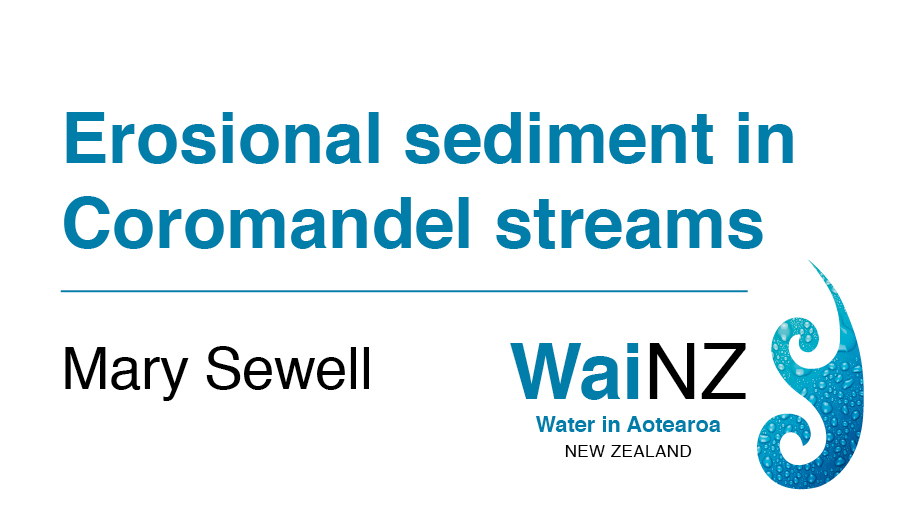
Erosional sediment in Coromandel streams
Memories of Stewart Stream, Opito Bay
Opito Bay on the Coromandel Peninsula is a special place to me – where I spent idyllic childhood summers, swimming, diving, exploring, hut-building – and with important experiences that led to my career as a marine biologist today.
The Stewart Stream in the middle of the bay was an important location for our adventures; you could travel up it in a small boat or kayak, you could play in the lagoon where it met the beach at its end and for some, this was where you went “fishing”, first off the bridge and then on the purpose-built fishing platform. There are stories of people catching huge eels and I, myself, have seen koura (freshwater crayfish), small fish and eels in the clearer headwaters of the stream.
Soil erosion poses a threat to our waterways
While recent attention has focused on nutrients and bacterial contamination in New Zealand’s rivers, there is a hidden danger present in many of our streams – sediment washing into our waterways through soil erosion.
Every stream naturally includes some form of sediment, but if the sediment levels get too high, then there is a cascade of effects on the stream – sediment can block the light so that algae cannot grow, can smother stream invertebrates which are an important food source for fish, can damage fish gills, and the decreased water clarity makes it more difficult for fish to move around and find their prey.
Scientists usually measure the effects of sediment on streams using a measure of turbidity (how cloudy the water is), and the % dissolved oxygen (if this is too low, then larger organisms such as fish may die).
One might think that the Stewart Stream, whose catchment is primarily exotic or native forest, might show good water quality. However, recent sampling by the Waikato Regional Council shows that at the stream mouth it exceeds ecological health guidelines in 5 of the 6 water quality measures in samples taken in January and February 2015 (see figure below).
Figure. Number of water quality results outside or within ANZECC guidelines for the samples collected weekly from 18 Coromandel streams for eight weeks during January and February 2015. (Waikato Regional Council Report)
In addition, faecal contamination from cows, humans, possums and gulls exceeded the guideline values half of the time, especially after periods of heavy rainfall. Some of this contamination will come from the drystock farm in the lower part of the catchment (which to its credit has fully-fenced the border with the stream), but some will also come from the septic tanks of holiday homes near the beach. In report-speak, this means that there is “an elevated risk of swimming at this location about half of the time”.
Stream clarity badly affected by erosional run-off
Let us focus, however, on the turbidity and dissolved oxygen levels. In general, the water is clear (below the guideline on 6/8 samples), but when it rains a large amount of sediment from the catchment runs into the stream (turbidity guideline exceeded, and there is a lowering of dissolved oxygen).
In the period since Jan/Feb 2015, when the Waikato Regional Council took these samples, the forestry block that borders the stream on the western side has been logged, and there is now significant wood debris and sediment from logging activities in the stream. Removal of the pine trees and the native undergrowth has exposed the underlying clay soil, so that every time there is significant rainfall the stream clarity drops dramatically.
I did not have the instruments needed to measure turbidity or dissolved oxygen on my recent walk but, as shown in the photo below (taken on 2 September 2017), the stream is carrying a lot of sediment and I imagine the invertebrates and fish living in here would be under some stress. After long periods of rainfall, this discoloured sediment forms a huge plume where the Stewart Stream meets Opito Bay.
This is New Zealand and the rain will continue to fall, and at times there will be lots of erosional sediment washed into our streams.
In a time of climate change, where rainfall is expected to be more intense, we need to more carefully consider the impact of what is happening in the catchment on our rivers and streams. Just as for our farms, where riparian plantings of native vegetation are used as a means to decrease nutrient runoff into our streams, perhaps it is time for our forestry blocks, whether in private or public hands, to consider a riparian zone of native vegetation, that gives a buffer for our streams from erosional run-off.
Mary Sewell
About:
Mary A. Sewell is a Professor in the School of Biological Sciences at the University of Auckland. She studies the impacts of the environment on reproduction and development in marine invertebrates. Increasingly, her research also covers the impacts of anthropogenic effects, such as climate change and freshwater run-off, on coastal marine systems.
What is WaiNZ?
Kia ora, Aotearoa. We’ve asked leading environmental, social and health researchers to share their personal and professional perspectives about the state of our water and what water means to us as New Zealanders. Follow their blogs right here at tepunhahamatatini.ac.nz and across social media with #WaiNZ.
Where possible, commentary will be backed up by data from Figure.NZ. Their incredible charts are based on data sourced from public repositories, government departments, academics and corporations. Check out their #WaiNZ data board and sign-up to create your very own data board on any topic that interests you.

